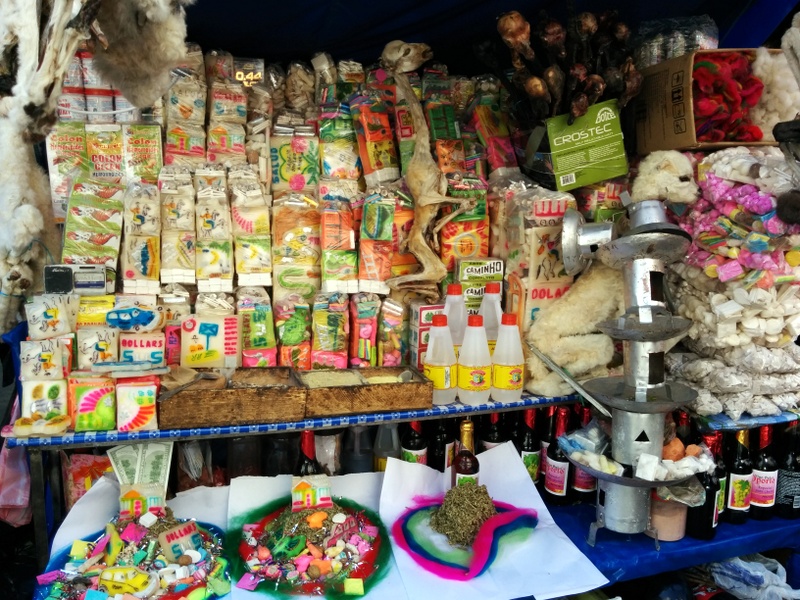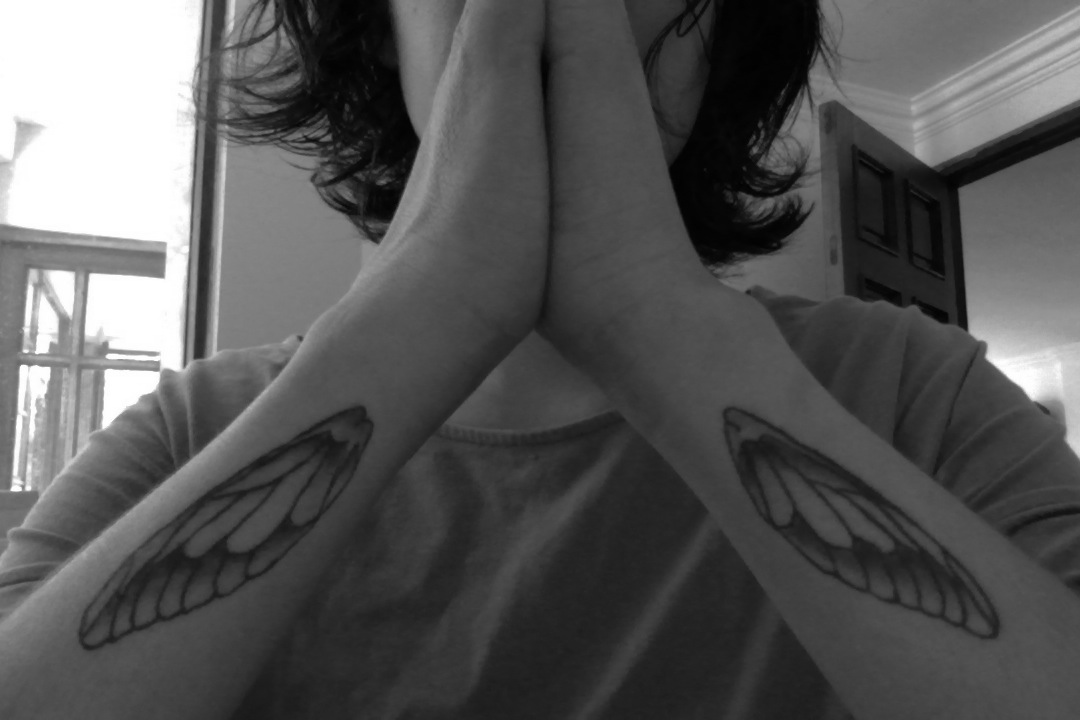
La Paz street stall selling materials for the mesa dedicated to Pachamama.
La Paz is a key stage in the journey of Joyaviva across the Pacific. Though due a dispute with Chile, Bolivia has been denied its access to the Pacific, at least symbolically Joyaviva brings the spirit of the ocean to Bolivia.
Many of the folk traditions of Bolivia have inspired the development of Joyaviva, particularly the figure of El Ekeko who appears in the Festival of the Alacitas. La Paz was the venue of a charm school, which produced some wonderful stories.
We weren’t able to formally exhibition Joyaviva in La Paz because our local host organisation Jalsuri Foundation had been closed down. But determined to bring Joyaviva to La Paz in some manner, an event was staged in which key works from the exhibition were displayed.
The discussion that followed revealed some very interesting points.
Why are the traditions of luck so rich and varied in Bolivia, compared to other countries? One reason is the use of coca leaf as a regular stimulant. Coca is seen to induce the kind of magical thinking that produces the complex rituals and objects in Bolivian culture. Also the mixture of Catholic and indigenous cultures has produced many hybrid beliefs, such as El Ekeko. This implies a Aymara and Quechua cultures that resisted extinction during colonisation.
Where does the power of amulets come from? There are obvious answers, such as the placebo effect, symbols of emotional support from others and identification with cultural traditions. One less obvious element was the way amulets channel the power of dreams, connecting our living reality with the more unconscious forces that appear in our sleep.
Given the presence of a touring international exhibition, the discussion turned to the state of design in Bolivia. In terms of participation in international design projects, there are number of issues that Bolivians face. Due to isolation, there is often a lack of confidence in sending work to foreign exhibitions. There are also relatively few spaces for showing design as art in La Paz, (there are more in Santa Cruz). There is great potential for designers to work with artisans, though it is difficult to make changes in traditional techniques that are passed down through generations.
Given these issues, it would be good in an ideal world for Joyaviva to start again in Bolivia, building a network in La Paz that is interested in the challenge of developing new designs from local folk traditions. This might be an opportunity to explore partnerships between designers and traditional artisans. With luck, this might be possible. Is there an amulet for that, or is it just a dream?
 And this tattoo by Gabriel Duran inspired much discussion about its use as an amulet in Bolivia.
And this tattoo by Gabriel Duran inspired much discussion about its use as an amulet in Bolivia.
See previous report of workshop in Bolivia.

 Joyaviva pays respects to El Ekeko – Joyaviva rinde homenaje a El Ekeko (29 julio).
Joyaviva pays respects to El Ekeko – Joyaviva rinde homenaje a El Ekeko (29 julio).




